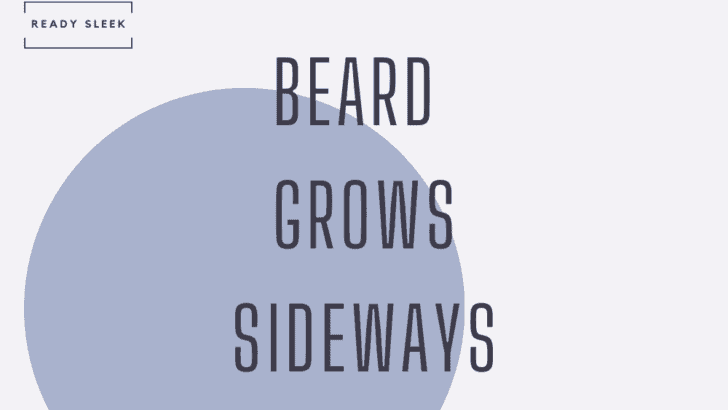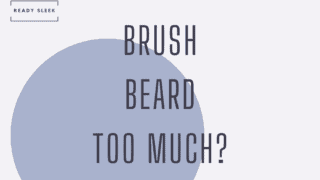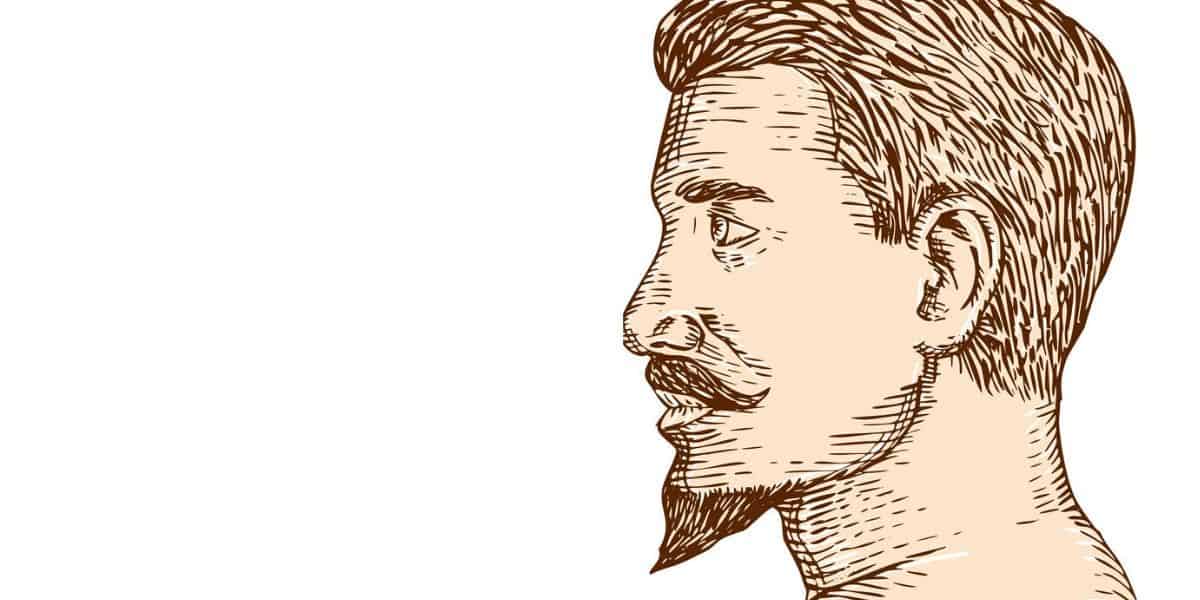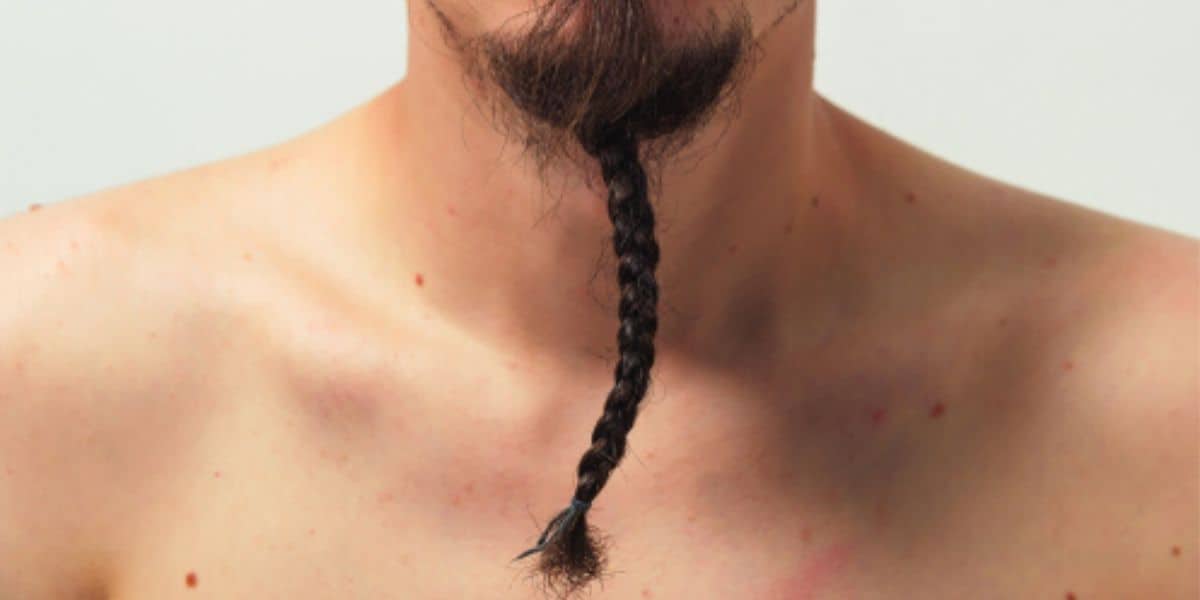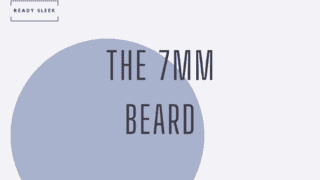Beard hair often doesn’t play ball. It’s an unfortunate fact, but it’s true. Noticing your beard growing sideways? Here are five things you could try today.
- Brush it
- Comb it
- Try grooming products – balms, butter, waxes, etc.
- Trim evenly
- Let it grow longer
That’s the good stuff in a nutshell. I want to delve into each of those tips a little deeper.
Plus, if you’re interested, check this article out to find out my most recommended beard trimming and grooming products of the year.
5 Tips For Men With Beards That Grow Sideways
1. Tame the beard with a beard brush
It keeps the beard looking neater, flatter, and straighter in a more “temporary” sense.
It’s great for distributing beard oil and other grooming products. The benefits of brushing a beard are worth noting.
Brushing regularly in a certain direction tames the beard to lay in your desired direction.
For example, if you notice that a collection of strands within your left cheek beard seems to grow sideways, try gently brushing them in a different direction.
2. Comb it regularly
A beard comb is more useful once the beard grows a little more. After 2 to 3 months of solid beard growth, a beard comb would usually be worth trying.
Detangling and styling are the main benefits.
As a beard grows longer, the deeper hairs can escape the reaches of a beard brush’s bristles. The relatively long teeth of a beard comb can get right in there and detangle them.
It can also perform some of the more intricate beard stylings you want to do. This is something the densely packed bristles of a beard brush may not be able to do.
Here’s what it can do for a beard that grows sideways.
Detangling a beard is essential if you want to keep the hairs straight, flat, and facing the way you want them to.
3. Balm, butter, wax, etc.
You may have noticed the recent surge in beard grooming products on the market today.
Oils, pomades, waxes, etc. It can be overwhelming.
Although it may seem like overkill, these products do work in different ways.
Different ingredients, consistencies, and levels of hold.
Beard oils, for instance, have a minimal level of hold, and so aren’t great for flattening/straightening.
Butters, balms, and waxes, on the other hand, can hold hairs in place.
The one you choose usually depends on two things – the amount of hold you need, and the consistency you want. Butters may have less hold, but feel less heavy than balms and waxes.
Waxes are great, particularly if you have a complex style that needs a strong hold. But they feel heavy to use.
Regardless, applying some product on to hair that lies sideways may be worth a try.
4. Trim carefully and in the right areas
Letting a barber handle this task is often best, particularly when you’ve got specific needs involving sideways beard hair.
Trimming too short in areas where you have a higher proportion of hairs that face in different directions can make it seem more obvious.
A little trick that’s sometimes hard to pull off is to vary the length using the adjustable size guard of your beard trimmer. This way, you can keep the areas of your beard you’ve noticed misbehaving slightly longer.
An “all-in-one” trimmer that’ll allow you to trim your beard effectively, as well as your body, is the Philips Norelco Multigroom. If you need a trimmer or you’re just interested, take a look at it on Amazon.
But getting back to the point..
A neckbeard that grows sideways is a common complaint. The solution to this is often simpler – trim it. The neckbeard shouldn’t extend beyond a well-defined neckline in any case.
5. Let it grow
You’d be amazed by how a lot of the beard problems men complain of tend to disappear after letting it grow a little longer.
Hair that faces sideways is not only more common at shorter lengths, but it’s also more visible. It’s an excellent reason to just let the beard grow a little longer.
Letting it grow a little longer, sometimes even just a few millimeters, can make it less noticeable.
Over time, the weight of your growing beard may pull these hairs in the direction you’d like them to face.

Frequently Asked Questions
Why does beard hair grow sideways?
Some beard hair grows sideways due to the direction the follicle is facing. There isn’t a whole lot that can be done about this direction.
The tips in this article will help you guide the beard hairs in the direction you want them. Although they don’t do anything to change the initial growth direction of the hair, they might help over time.
What do I do about my beard growing sideways under my chin?
This either refers to the hair on your chin itself (the fore beard) or the neckbeard. The same tips in this article apply. Trimming a well-defined neckline
Letting the fore beard grow longer also makes it less noticeable by hiding any unruly hairs beneath it.
Conclusion
Getting to grips with how your beard likes to grow is an important aspect of the journey. A common problem is men getting fed up with the awkward phase and trimming prematurely. They don’t get a chance to see where their beard goes from there.
Knowing what direction your beard likes to grow in different parts of your beard and at different stages of growth is important.
It’ll help guide your trimming technique, length, brushing direction, choice of product, and more.
Ready Sleek founder. Obsessed with casual style and the minimalist approach to building a highly functional wardrobe. Also a fan of classic, vintage hairstyles.

